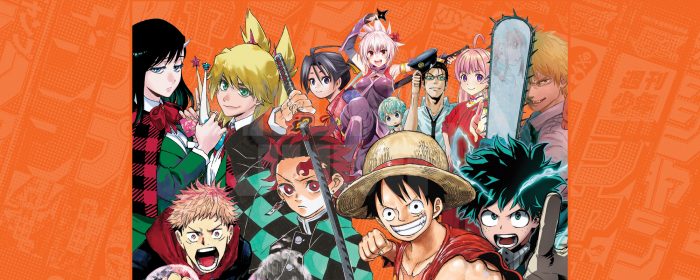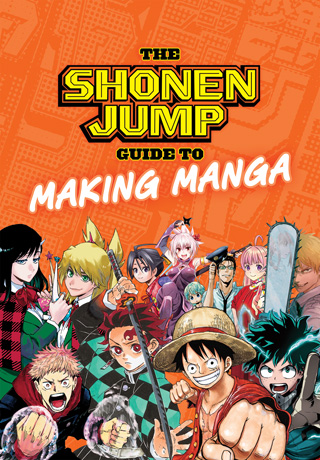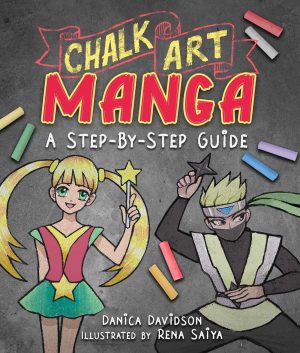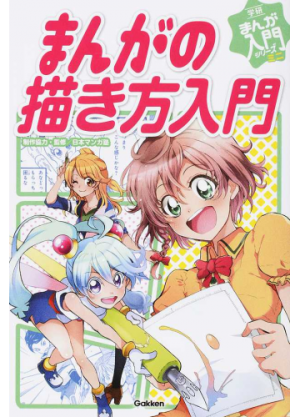
- Mangaka : Weekly Shonen Jump Editorial Department
- Publisher : Viz
- Genre : Educational, Art Book
- Published : October 2022
Finding decent manga guide books can be a difficult and fruitless chore in the West. Bogged down by cartoonists who’ve only ever glanced at a few episodes of Digimon, most of the how-to guides at your local bookshop feature 90s anime designs that barely mention anything related to the actual craft of manga artwork.
Enter the official Shonen Jump Guide to Making Manga, a unique combination of how-to guides and mangaka interviews that covers everything from ideation to page layout, with honest advice from actual mangaka. Focusing less on drawing techniques and more on the overall business of making manga, the Weekly Shonen Jump Editorial Department will soon have you inspired to start drawing your own manga!
Join us today on Honey’s Anime as we review The Shonen Jump Guide to Making Manga Review!
Contains Spoilers
Discussion Time
The preface to the Shonen Jump Guide offers insight into how this unique guidebook came about. Rather than focusing on the minute details of how to draw in a manga style, this guide is dedicated to the craft as a whole, from the first idea to the final page.
In a beautiful conversational style, the Weekly Shonen Jump Editorial Department walks you through the initial ideation phase of creating a story. Then it’s on to storyboarding, with real examples of actual storyboards from the editorial team. Any budding artist knows how invaluable real-world examples are, and having mangaka with actual on-the-job experience give their advice on characterization and scene placement is truly priceless.
Even better, there are sixteen—count them, sixteen!—interviews with Viz-published mangaka, including Eiichiro Oda of One Piece, Gege Akutami of Jujutsu Kaisen, Tite Kubo of Bleach, and Kohei Horikoshi of My Hero Academia, just to name a few.
These interviews show the differences between artists and reinforce the Editorial Department’s views that there’s no “one way” to become a mangaka. Hear from Koyoharu Goutouge of Demon Slayer: Kimetsu no Yaiba, who dislikes complex concepts and jargon; or learn the brutal truth about manga workloads from Food Wars! Shokugeki no Soma’s artist, Shun Saeki. We Never Learn’s mangaka, Taishi Tsutsui, even offers recommendations for pens and ink!
After the interviews, it’s back to learning more about the foundations of becoming a mangaka: how to incorporate feedback from readers, how to avoid getting creatively stuck, and how to open yourself up to a more creative mindset in your daily life.
By the end of these 192 pages, you’ll truly be armed with all the knowledge to tackle the daunting world of manga art!

1. Creating a Manga, Not Just Drawing It
Most how-to guides for manga—even the excellent ones printed in Japanese—focus on the technical details of drawing bodies, hair, proportions, and so forth. This guidebook is designed for readers who want to learn what it takes to actually produce a full manga from start to finish, and keep that going.
The guide does have practical sections, such as how to work with the industry-standard Clip Studio Paint, but these sections are dedicated to useful information like layer usage, text bubbles, and even what type of tablet or PC to buy. Don’t worry; if you’re an analog artist, like many of the best mangaka, there’s a section dedicated to what types of pens and paper to buy!
2. The Voice of Japan’s Best Talent
We’ve already talked about the staggering number of interviews and commentary from professional mangaka in the guide, but it bears repeating.
Popping into your local, Western-focused bookshop, you’ll find a range of “manga” guidebooks, but these are typically authored by Western cartoonists with only a passing understanding of manga. The few that are written by experienced artists are very rarely from true mangaka—if you want that, you’d need to import a book from Japan, and if you’re an English speaker, that’s a huge barrier to learning.
With The Shonen Jump Guide to Making Manga, you’ve got a huge resource at your fingertips, fully translated, coming directly from the Editorial Department that makes your favorite manga come to life. There are quite literally no better people to get career advice from than mangaka who are working at one of the world’s most esteemed companies.
If you have any interest at all in becoming a proper mangaka, then this guidebook is absolutely invaluable.
Final Thoughts
Although we often speak as an outlet, this writer in particular has dabbled extensively in anime- and manga-style art, and so we can say with an authoritative voice that this guidebook is one of the best we’ve read. Our shelves are filled with half-used books that only go a tenth of the way to being truly useful for the type of effort and mindset you need for serialized content.
With 192 pages of advice from the Shonen Jump Editorial Department and some of the biggest names in the manga industry, this guidebook is absolutely a must-buy for any artist seriously wanting to work on manga.
Are you going to check out The Shonen Jump Guide to Making Manga? Let us know down in the comments below, and as always, thanks for reading!
Recommended Post
Which Manga Drawing Software is Actually Good?
Recommended Post




